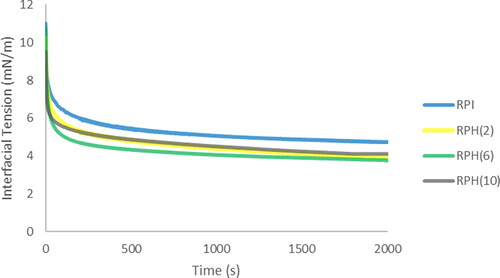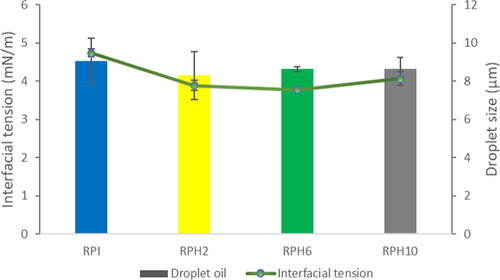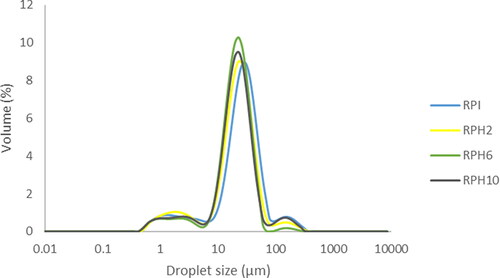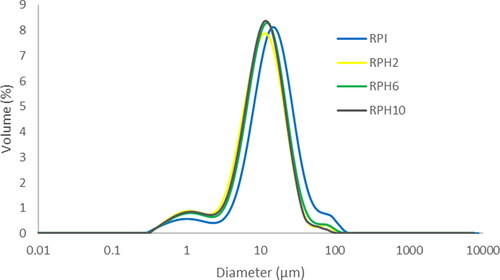Figures & data
Figure 1. Interfacial tension at the interface between orange oil and rice protein isolate (RPI) and rice protein hydrolysates (RPH, with the degree of hydrolysis of 2, 6, and 10%) at 1.5% w/w.

Figure 2. Comparison between droplet size and interfacial tension of emulsions of orange oil stabilized by maltodextrin and rice protein isolate (RPI) or rice protein hydrolysates (RPH, with degree of hydrolysis of 2, 6, and 10%).

Figure 3. The size distribution of oil droplets in emulsions stabilized by maltodextrin and either rice protein isolate (RPI) or rice protein hydrolysate (RPH) with degrees of hydrolysis of 2%, 6%, and 10%.

Table 1. Effect of degree of hydrolysis (2, 6, and 10%) on the surface composition obtained from XPS for the spray-dried orange oil powders.
Table 2. Physicochemical properties of orange oil microparticles formulated with maltodextrin (MD) and rice protein isolate (RPI) or rice protein hydrolysate (RPH, with degrees of hydrolysis of 2%, 6%, and 10%).
Figure 4. Particle size distributions for microparticles produced by rice protein isolate (RPI) or rice protein hydrolysate (RPH, with degree of hydrolysis of 2%, 6%, and 10%).

